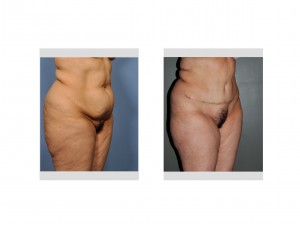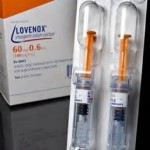
There are a variety of before and after surgery considerations that can increase the risk of developing a DVT and/or PE. Genetics/family history, current medications (e.g. birth control pills), lack of movement after surgery and fluid levels (dehydration) can all contribute to an increased tendency for blood flow to slow down and have an increased tendency to clot.
Of all aesthetic plastic surgery procedures, the tummy tuck is at the highest risk for DVT/PE. The binding of the abdomen, the discomfort of muscle plication,the increased pressure on the vena cava and the subsequent tendency for limited early mobility after surgery are a potential setup for slowed venous blood flow return from the legs. If you factor in other adjunctive procedures like liposuction of the thighs and hips, and the subsequent circumferential binding used, the risks are further increased.

There is certainly a debate whether every tummy tuck patient should get Lovenox or just those that are at the highest risk. That is an individual plastic surgeon’s decision. The prophylactic dose of Lovenox is 30 mg subcutaneous injection twice daily with the initial dose administered within two or three hours of surgery and continuing for one week thereafter. There is no specific dose for weight-based Lovenox for use as DVT prophylaxis but most surgeons do not exceed 0.5 mg/kg every 12 hours.
Lovenox is historically expensive but generic versions (enoxaparin) have become available which dramatically lowers the cost. Insurance often covers its use but for an aesthetic surgery it may not be covered.
Dr. Barry Eppley
Indianapolis, Indiana


